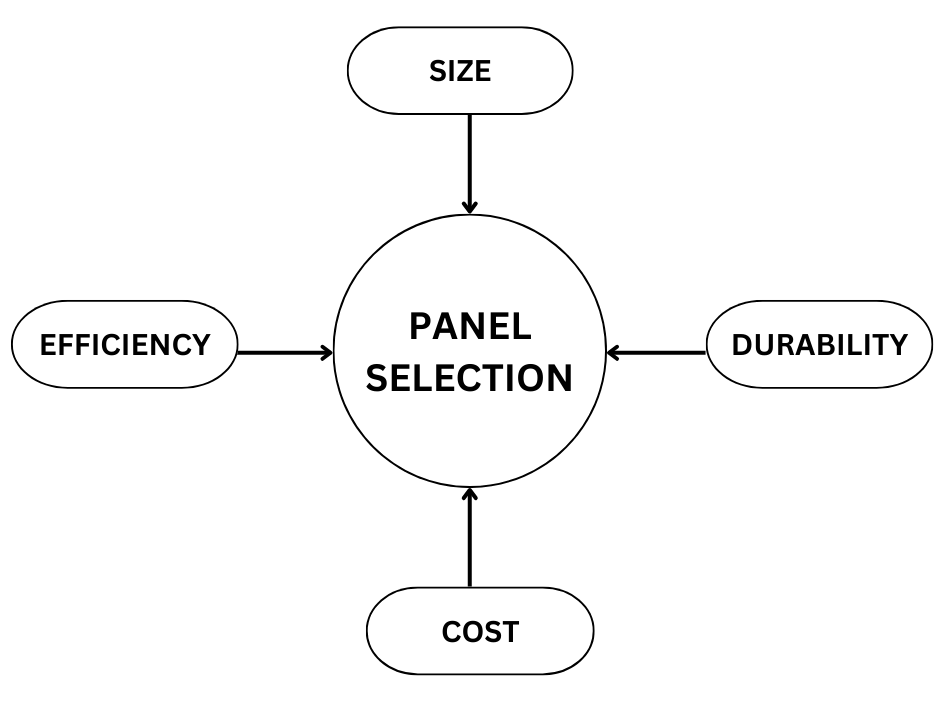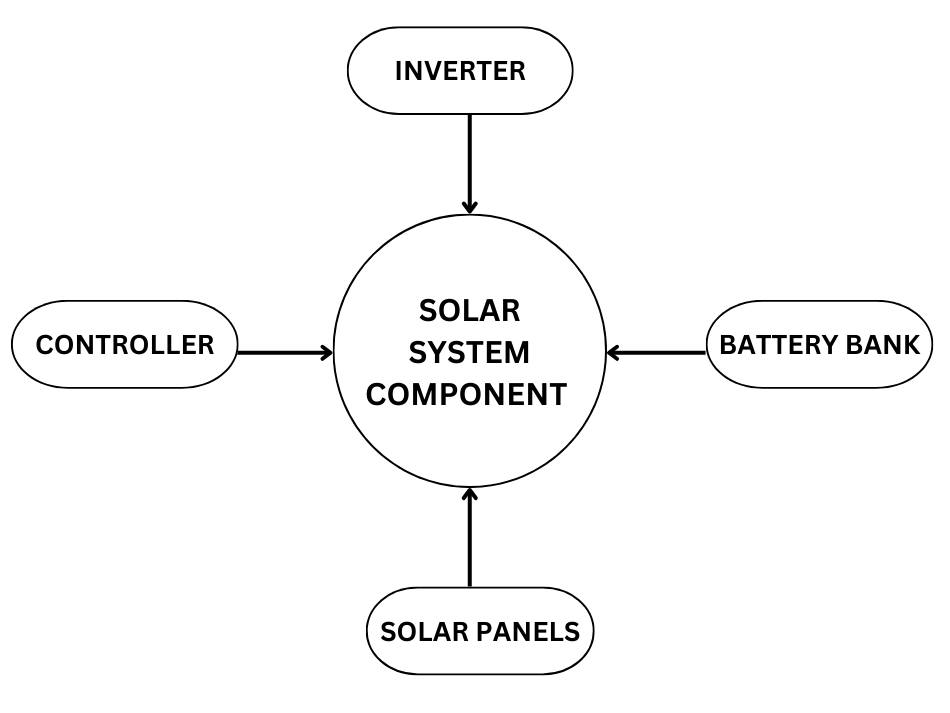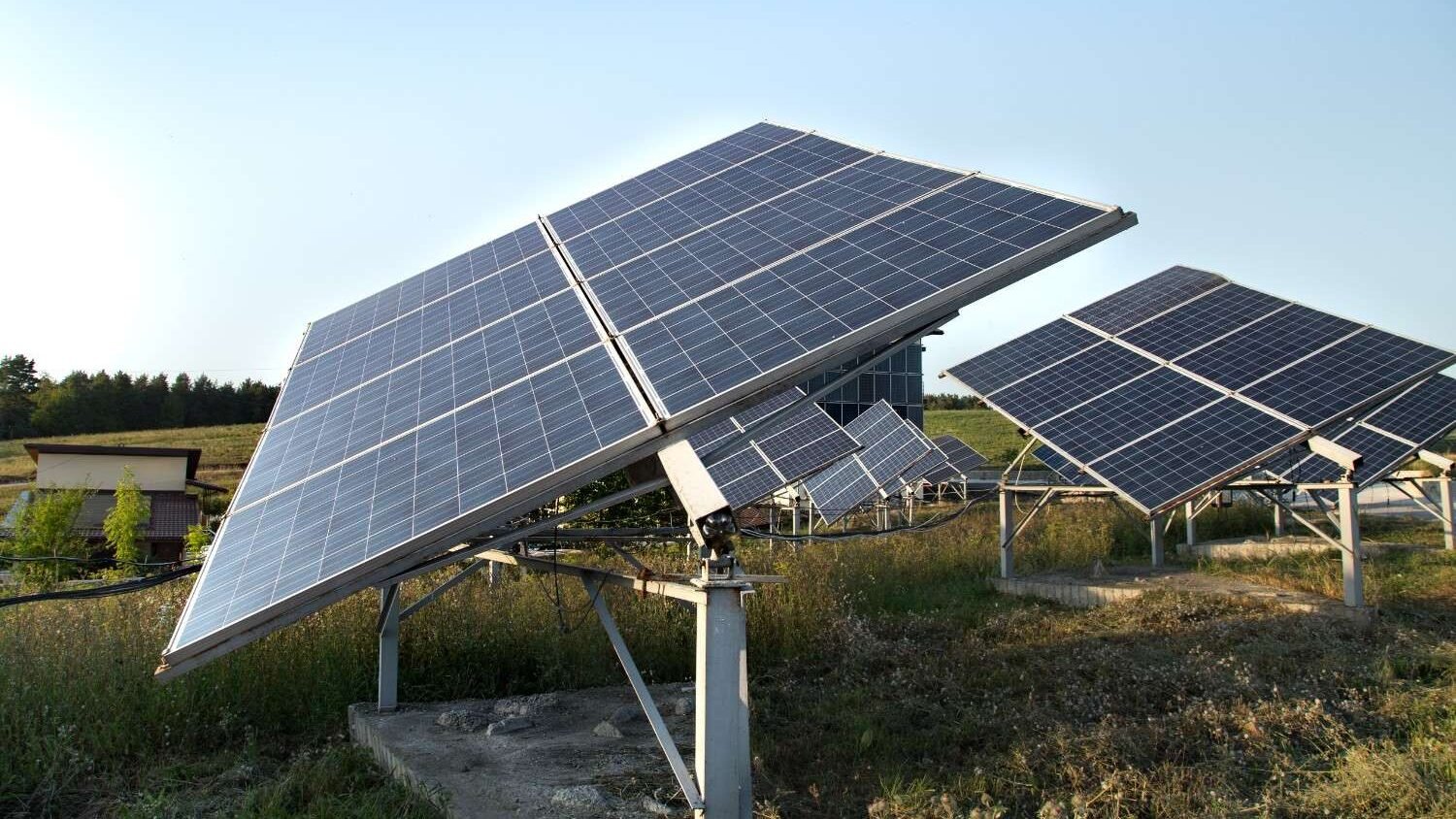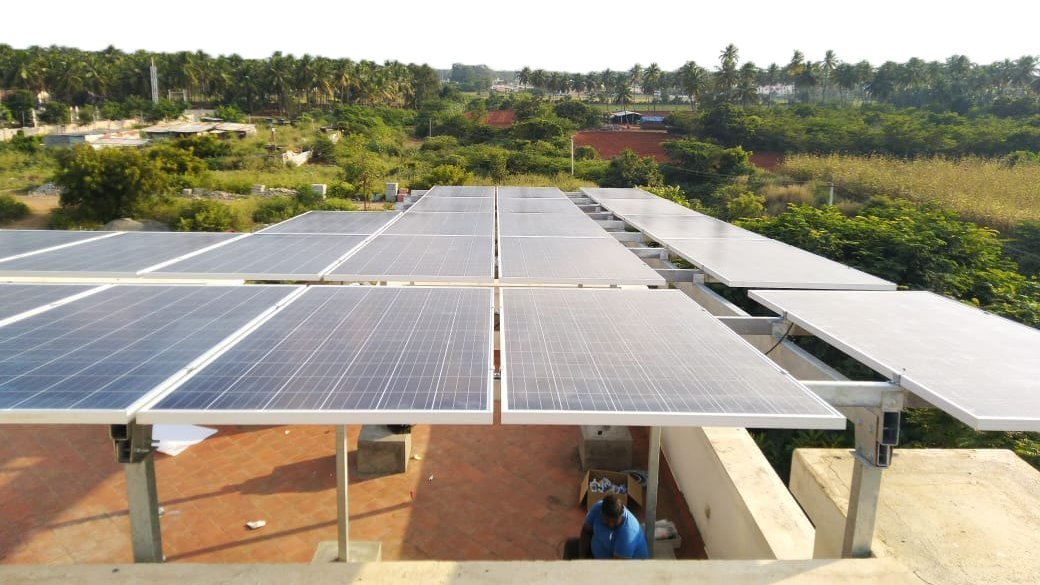As the world increasingly recognizes the importance of renewable energy, solar power has emerged as a vital solution for sustainable energy needs. Eco-smart solar strategies promote energy efficiency and environmental conservation and help individuals and businesses reduce their carbon footprints and lower energy costs. This blog will explore various eco-smart solar strategies that can enhance energy efficiency, promote sustainability, and contribute to a cleaner planet.
Table of Contents
Understanding Eco-Smart Solar Strategies
Eco-smart solar strategies refer to innovative approaches to solar energy utilization that prioritize sustainability, efficiency, and environmental impact. These strategies encompass a range of practices, technologies, and policies designed to maximize the benefits of solar energy while minimizing negative effects on the ecosystem. The word “eco-smart” is designed to actively manage and reduce its impact on the environment more smartly. It’s something that considers environmental concerns and then finds a way to address, manage, and ultimately work toward a resolution for them.
The Benefits of Eco-Smart Solar Strategies
Implementing eco-smart solar strategies can yield numerous advantages, including:
1. Environmental Conservation
Environmental conservation has become imperative in the face of escalating climate change, rampant pollution, and the depletion of natural resources. The effects of these environmental crises are far-reaching, impacting not just the natural world but also human health, economies, and social structures. The urgency to act is underscored by increasing occurrences of extreme weather events, rising sea levels, and the loss of biodiversity, which threaten the very fabric of life on Earth.
2. Cost Savings
Solar power can significantly reduce electricity bills by generating renewable energy that offsets what is used. One of the primary benefits of a commercial eco-smart solar strategies power plant is the significant reduction in energy bills. By generating their electricity, businesses can cut down on their reliance on expensive grid power.
3. Energy Independence
Generating your own power through solar energy reduces your dependence on the grid. This increased energy independence provides greater control over your energy supply and costs. It also insulates you from fluctuating utility rates and potential energy shortages, giving you stability in your energy usage.
4. Job Creation
Solar power plants create a range of employment opportunities across different stages of their lifecycle. From the initial design and engineering phases to construction, operation, and maintenance, solar projects generate jobs in various sectors. This includes roles for engineers, technicians, project managers, and construction workers. The growth of the eco-smart solar strategies industry thus supports full and productive employment, contributing significantly to local and national economies.
5. Increased Property Value
Homes with eco-smart solar strategies panels often see a rise in property value. Potential buyers are attracted to the possibility of lower energy bills and the environmental benefits of solar energy, making your home a lot more attractive in the market.
Key Eco-Smart Solar Strategies
1. Solar Panel Selection
The selection of eco-smart solar strategies panels involves considering factors like panel efficiency, durability, size, and cost. Panels with higher efficiency are preferred as they can generate more electricity in each area. The total number of panels is determined based on the calculated solar system capacity from the planning phase.
The CS6K-275M solar panel boasts a maximum power output of 275 W and an efficiency range of 15% to 16.79%. It operates at a voltage of 31.1 V at maximum power (Vmp), with a current of 8.85 A (Imp). The panel features an open circuit voltage (Voc) of 38.2 V and a short circuit current (Isc) of 9.45 A. Measuring 1650 × 992 × 40 mm and weighing 18.2 kg, it is designed to withstand operating temperatures ranging from -40 °C to +85 °C. The CS6K-275M utilizes monocrystalline cell technology and comprises 60 individual cells, making it a robust choice for efficient solar energy conversion.

2. Inverter Selection
Solar panels generate DC power, which the inverter converts into household AC power. Inverters with high efficiency and reliability are chosen, and their capacity must match solar panel output. An intelligent inverter that manages solar, battery, and grid power flow increases system flexibility. During solar generation fluctuations or household power demand changes, intelligent management is essential for power supply stability. With minimal energy loss and maximum solar power use, the right inverter is crucial to system longevity.
The SMA Sunny inverter offers a high efficiency of approximately 97%, making it a reliable choice for solar energy systems. It supports a DC input power of up to 3000 W and delivers an AC output power of 2500 W. The inverter operates within a DC input voltage range of 150 V to 450 V, with a maximum DC input voltage of 600 V, while the AC output voltage is 230 V (±10%) at 50 Hz. It can handle a maximum AC output current of 12 A and features an adjustable power factor of 0.8.
With MPPT efficiency greater than 99%, the system optimizes energy conversion effectively. Communication interfaces include an integrated web server, Wi-Fi, and Ethernet, allowing for easy monitoring and control. Additionally, the intelligent energy management system efficiently manages power flow between the eco-smart solar strategiessystem, battery bank, and the grid. Designed for versatility, it operates in temperatures ranging from -25 °C to +60 °C, and includes protection features such as overvoltage, short circuit, temperature, and anti-islanding protection, ensuring safe and reliable operation.

3. Energy Storage Solutions
Commercial Solar Energy Storage
Businesses and utility companies can invest in mechanical and thermal storage solutions, despite their higher costs, to manage peak energy demand effectively. In 2020, the U.S. saw a surge in energy storage deployment, with a 240% increase in the third quarter alone, primarily in one-hour front-of-the-meter (FTM) storage systems. Cost-effective options include compressed air storage at $105/kWh and pumped hydro storage at $165/kWh, although pumped hydro faces regulatory and geographical challenges.
Home Solar Energy Storage
Residential solar energy storage offers benefits like resilience and cost savings, with lithium-ion batteries being the most popular choice for homeowners. These batteries allow energy storage during peak production times for later use, providing uninterrupted energy and savings. Other options include saltwater and lead-acid batteries, making home solar storage accessible and efficient for average homeowners.

4. Solar Tracking Systems
The main mechanism of the solar tracking system consists of the tracking device, the tracking algorithm, the control unit, the positioning system, the driving mechanism, and the sensing devices. The tracking algorithm determines the angles which are used to determine the position of the solar tracker. There are two types of algorithms-astronomical algorithms and real-time light intensity algorithms. The astronomical algorithm is a purely mathematical algorithm based on astronomical references. The real-time light intensity algorithm is based on real-time light intensity readings.
The control unit performs the tracking algorithm and manages the positioning system and the driving mechanism. The positioning system operates the tracking device to face the sun at the calculated angles. The positioning system can be electrical or hydraulic. The driving mechanism is responsible for moving the tracking device to the position determined by the positioning system. The sensing devices are groups of sensors and measurements that measure the ambient conditions, the light intensity in case of real-time light intensity algorithms, and the tilt angle of the tracker (by means of an inclinometer or a combination of limit switches and motor encoder counts)

5. Community Solar Projects
By joining a community solar project, property owners can cut their carbon emissions and lower electricity costs without altering their rooftops or homes. This model promotes clean energy access for those unable to install solar panels due to limited space, shading, outdated systems, high costs, or not owning their property.
Community solar participants become members of a shared solar project located off-site, such as a solar farm or large utility facility. Each member pays for a share of the energy produced by the array and receives credits on their electricity bill based on their share. This approach not only reduces carbon emissions but also helps lower operational costs for property owners.
- Access to Renewable Energy: Enables renters or those with shaded properties to participate in solar energy production.
- Cost-Effectiveness: Share installation and maintenance costs, making solar energy more affordable.
- Community Engagement: Foster community cooperation and awareness around renewable energy.

6. Energy Efficiency Upgrades
Around 20% of the average household’s electricity cost is attributed to electrical equipment in the home, which are major energy consumers. The good news is that this load can be greatly decreased by swapping out outdated appliances for energy-efficient alternatives. These appliances improve your life in concrete ways and require less energy to accomplish the same activity. In addition to lowering your electricity costs, they also have a positive environmental impact. Furthermore, they are guaranteed by Energy Star certifications, which attest to their compliance with stringent energy-saving standards. Both the environment and your wallet will benefit from it, and it’s a step in the direction of a more sustainable future.
7. Sustainable Practices in Installation
Advanced photovoltaic technologies, such as Perovskite solar cells, are transforming solar panel efficiency by offering cost-effective and eco-friendly alternatives to traditional materials. Floating solar farms represent another innovative solution, utilizing water bodies to save land space and contribute to ecological balance. Advances in solar energy storage, including solid-state and flow batteries, are improving the reliability of solar power by enabling efficient energy storage.
Solar-powered transportation is gaining momentum, with solar-powered vehicles and charging stations paving the way for a greener transport system. Smart solar management systems, driven by AI and smart grids, are optimizing energy usage and reducing waste. Additionally, the solar industry is embracing eco-friendly manufacturing practices, focusing on sustainable materials, minimizing water consumption, and promoting recycling. Building-integrated photovoltaics (BIPV) further enhance sustainability by incorporating solar cells into building materials, allowing for energy generation without compromising architectural design.

8. Incentives and Policies
Solar energy has become much more affordable, with costs dropping by 90% over the past decade and efficiency improving significantly. Property owners can reduce energy costs and achieve energy independence through various government incentives like grants and tax credits.
The average installed cost for a residential solar system is now between ₹166-₹249 per watt. The USDA’s REAP program offers loans and grants to agricultural producers and rural small businesses for renewable energy projects, with grants ranging from ₹2.07 lakh to ₹8.29 crore. While the application process is complex, partnering with experts like EcoSmart can simplify it.
Additionally, the U.S. Government’s Investment Tax Credit (ITC) allows homeowners to reclaim up to 30% of the solar project costs, covering both equipment and installation. This tax credit is valid for 2023 to 2032, and can be claimed using IRS Form 5695.

Implementing Eco-Smart Solar Strategies
Transitioning to solar energy isn’t just a green move — it’s a smart, future-ready decision that drives efficiency, reduces costs, and strengthens your company’s sustainability goals. However, to truly harness the potential of solar power, implementing the right Solar strategies is essential. These strategies help you optimize system performance, maximize ROI, and minimize your environmental footprint.
1. Assessment: Evaluate Energy Needs and Solar Potential
Before diving into solar technology, it’s crucial to start with a thorough assessment of your energy needs and the potential for solar energy production at your site.
Steps to Follow:
- Identify Energy-Saving Opportunities:
Before you install solar panels, look for ways to minimize energy waste. Small actions — like upgrading to energy-efficient appliances, improving insulation, or switching to LED lighting — can significantly reduce your energy load.
- Conduct an Energy Audit:
Review your past electricity bills, identify peak usage hours, and understand seasonal variations. A professional energy audit will reveal how much power your solar system should generate to meet your needs effectively.
- Evaluate Solar Potential:
Use digital tools or partner with a solar expert to assess your site’s solar potential. Consider roof space, shading, and sunlight availability throughout the year. A clear understanding of these factors ensures that your Solar strategies are both efficient and cost-effective.
2. Research: Explore Solar Technologies and Strategies
Once you understand your energy profile, the next step is research. Exploring different solar technologies and aligning them with your Solar strategies ensures your system is future-ready and sustainable.
Steps to Follow:
- Compare Solar Panel Types:
Learn about monocrystalline, polycrystalline, and thin-film panels. Each offers unique benefits — monocrystalline panels provide high efficiency, while polycrystalline and thin-film options are ideal for specific applications and budgets.
- Integrate Battery Storage:
Include battery systems like lithium-ion storage in your Solar strategies to store excess energy. This ensures power availability during low sunlight or outages and enhances energy independence.
- Adopt Smart Inverters and Solar Trackers:
Smart inverters optimize energy flow and monitor performance, while solar trackers adjust panels to follow the sun — increasing energy production by up to 25%.
- Consider Environmental Impact:
Sustainable Solar strategies go beyond energy generation. Choose components and manufacturers committed to eco-friendly practices, recyclable materials, and low-impact production processes.
3. Consultation: Work with a Reputable Solar Provider
Even the best Solar strategies need expert execution. Collaborating with an experienced solar energy provider ensures your project is technically sound, financially feasible, and aligned with your long-term energy goals.
Steps to Follow:
- Seek Professional Advice:
Schedule a consultation with a reputable solar company. Experts can recommend the ideal solar system configuration — rooftop, ground-mount, or hybrid — based on your unique energy requirements.
- Customize Your System:
Every site has different energy needs. Work with your provider to tailor a system design that integrates seamlessly with your operations and supports your sustainability objectives.
- Explore Financing Opportunities:
A good solar provider will guide you through available financing options — including government incentives, corporate tax benefits, or solar leasing programs — to make your investment in Solar strategies more cost-effective and rewarding.

4. Installation: Ensure Professional Installation
The installation phase is one of the most crucial parts of implementing successful Solar strategies. Proper installation not only determines the efficiency and longevity of your solar system but also plays a vital role in ensuring safety and maximizing energy production. Every detail — from the type of mounting structure to panel orientation — impacts the long-term performance of your solar investment.
Steps to Follow:
- Sustainable Practices:
Discuss with your installer the integration of sustainable installation methods. Opt for eco-friendly materials, efficient wiring systems, and minimal waste practices to ensure your Solar strategies align with broader sustainability goals.
- Hire Certified Installers:
Choose a solar provider that employs certified and experienced technicians. Professional installation eliminates costly mistakes, ensures electrical safety, and supports the durability of your system. Expertly installed systems are a core part of effective Solar strategies, guaranteeing performance for years to come.
- Optimize Panel Placement:
Proper panel placement is essential for achieving maximum sunlight exposure. Installers should consider roof angle, orientation, shading from nearby buildings or trees, and local weather patterns. Optimized placement enhances energy generation and helps you get the most from your solar investment.
5. Monitoring
After installation, continuous monitoring and maintenance are key to ensuring your solar system is performing at its best and meeting your energy production goals.
Steps to Follow:
- Upgrade When Needed:
As technology advances, consider upgrading your system with new components like more efficient batteries or improved inverters to further enhance energy savings.
- Track Energy Production:
Use monitoring tools or software provided by your solar company to keep track of your system’s energy production. This will allow you to spot any issues early, such as a decrease in output caused by shading or dirt accumulation on panels.
- Adjust Usage:
Based on the data, adjust your energy usage to align with solar production. For instance, running appliances during peak sunlight hours maximizes the use of solar energy and reduces reliance on the grid.
- Schedule Regular Maintenance:
Routine maintenance, such as cleaning the panels and checking the system’s components, ensures the longevity and efficiency of your solar setup. It’s best to have a professional service your system annually.
Conclusion
Embracing eco-smart solar strategies is essential for transitioning to a sustainable energy future. By investing in solar technology and adopting environmentally friendly practices, individuals and businesses can significantly reduce their carbon footprints, lower energy costs, and contribute to a cleaner planet.
As the demand for renewable energy continues to grow, staying informed about the latest eco-smart strategies will empower you to make informed decisions and maximize the benefits of solar energy. Together, we can harness the power of the sun to create a greener and more sustainable future for generations to come.
Interested in reducing your carbon footprint? Schedule a consultation with Soleos Solar to discover the best solar solutions for your home or business!
